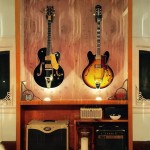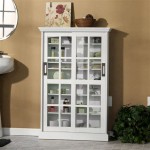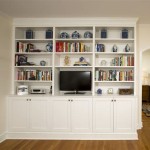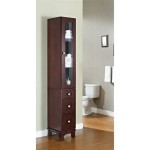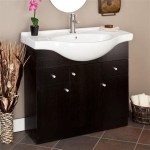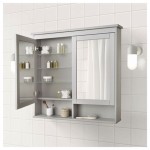Do You Prime Kitchen Cabinets Before Painting? A Comprehensive Guide
Painting kitchen cabinets is a popular and cost-effective way to refresh the look of a kitchen without undergoing a full renovation. However, achieving a durable and professional-looking finish requires more than just applying a coat of paint. A critical step that often determines the success of the project is priming. Understanding the importance of priming and the factors involved in deciding whether or not to prime is essential for achieving long-lasting and aesthetically pleasing results.
Priming is the process of applying a preparatory coating to a surface before painting. This coating, known as primer, serves several purposes that significantly enhance the final paint job. It acts as a sealant, preventing the underlying material from absorbing the paint unevenly. This ensures uniform color and sheen. Primer also provides a better adhesive surface for the paint, promoting better bonding and reducing the likelihood of peeling or chipping. Furthermore, some primers are formulated to block stains and odors, preventing them from bleeding through the topcoat. Applying primer ultimately contributes to a more durable and visually appealing finish that lasts longer and requires less maintenance.
The decision of whether or not to prime kitchen cabinets before painting should be carefully considered based on several factors related to the cabinet material, the existing finish, and the desired outcome. Bypassing priming when it is needed can lead to a subpar paint job that is prone to problems and necessitates early repainting, ultimately costing more time and money. Therefore, understanding the circumstances under which priming is crucial is an investment in the longevity and quality of the kitchen cabinet finish.
Key Point 1: Understanding Cabinet Materials and Primer Needs
The material of the kitchen cabinets plays a significant role in determining whether priming is necessary. Different materials have varying levels of porosity and reactivity with paint, making some more susceptible to paint absorption issues or adhesion problems. Common cabinet materials include wood, laminate, melamine, and metal. Each material presents unique challenges and requirements for achieving a smooth and durable painted surface.
Wood, in its various forms (solid wood, plywood, MDF), is a common cabinet material. Solid wood is naturally porous and can absorb paint unevenly, leading to variations in color and sheen. Plywood, composed of layers of wood veneer, also exhibits porosity, though typically less than solid wood. Medium-Density Fiberboard (MDF) is a manufactured wood product made from wood fibers and resin. While MDF has a smooth surface, it is highly absorbent, especially on the edges and corners. Priming wood cabinets, regardless of the type, is generally recommended to seal the surface, prevent excessive paint absorption, and create a uniform base for the topcoat.
Laminate and melamine cabinets have smooth, non-porous surfaces that are designed to be resistant to moisture and staining. However, this also means that paint struggles to adhere properly to these surfaces. Without proper preparation, paint can easily scratch, peel, or chip off laminate and melamine. Priming is crucial for these materials, but the type of primer is particularly important. Adhesion primers, specifically designed to bond to slick surfaces, are necessary to ensure the paint adheres properly. These primers contain agents that create a strong mechanical bond between the smooth surface and the paint. Sanding the surface lightly before applying the adhesion primer can further improve adhesion.
Metal cabinets, while less common in modern kitchens, present their own set of challenges. Metal surfaces are typically smooth and non-porous, similar to laminate and melamine. Additionally, metal is prone to rust, which can bleed through the paint and compromise the finish. In this case, a rust-inhibiting primer is essential. This type of primer not only promotes adhesion but also protects the metal from corrosion. Before priming, any existing rust should be removed and the surface should be thoroughly cleaned and degreased.
In summary, the cabinet material dictates the type of primer needed, with porous materials like wood requiring sealing primers and smooth, non-porous materials like laminate, melamine, and metal requiring adhesion or rust-inhibiting primers. Failing to choose the appropriate primer can result in a failed paint job, regardless of the quality of the paint used.
Key Point 2: Assessing the Existing Finish and its Impact on Priming
The existing finish on the kitchen cabinets significantly impacts the decision of whether or not to prime. Factors such as the type of paint previously used, its condition, and its color can all influence the need for priming. Understanding the characteristics of the existing finish allows for proper surface preparation and selection of the appropriate primer to ensure optimal paint adhesion and a flawless final result.
If the existing paint is in good condition, meaning it is not peeling, chipping, or cracking, and is the same type and color as the new paint, priming may not be strictly necessary, although it is still often recommended for improved adhesion and a more uniform finish. However, if the existing paint is glossy, it is crucial to lightly sand the surface to create a better "tooth" for the new paint to adhere to. Deglossing agents can also be used to reduce the gloss without sanding. Even in these cases, a coat of primer can provide an additional layer of insurance against adhesion problems.
When the existing paint is peeling, chipping, or cracking, it is essential to remove the loose paint before proceeding. Scraping, sanding, or using chemical strippers may be necessary to achieve a smooth and stable surface. Once the damaged paint is removed, the underlying surface may be uneven or stained. Priming is crucial in this scenario to create a smooth, uniform base for the new paint. A high-build primer can help fill in minor imperfections and create a level surface.
Changing the color of the kitchen cabinets, especially from a dark to a light color, almost always necessitates priming. Dark colors can bleed through lighter paints, resulting in an uneven and unsatisfactory finish. A stain-blocking primer is essential to prevent the dark color from showing through the new paint. Multiple coats of primer may be necessary to completely block the underlying color, especially when transitioning from very dark shades like black or brown to light shades like white or cream.
Cabinets that have previously been stained or varnished present a particular challenge. Stain and varnish penetrate the wood and create a smooth, non-porous surface that is difficult for paint to adhere to. Thorough sanding is necessary to remove the majority of the stain or varnish before applying a primer. An oil-based or shellac-based primer is often recommended for these surfaces, as they provide better adhesion and stain-blocking properties than latex-based primers.
In conclusion, the condition and nature of the existing finish are critical considerations when deciding whether or not to prime kitchen cabinets. Addressing any existing damage, preparing the surface properly, and selecting the appropriate primer based on the previous finish are essential steps in achieving a professional and long-lasting paint job.
Key Point 3: Selecting the Right Type of Primer for Optimal Results
Choosing the correct type of primer is as important as deciding whether or not to prime. There are various types of primers available, each formulated for specific applications and surfaces. Using the wrong type of primer can lead to adhesion problems, uneven finishes, and other issues that compromise the overall quality of the paint job. Understanding the different types of primers and their characteristics ensures that the appropriate product is selected for the project.
Latex primers are water-based and are suitable for most interior painting projects, including kitchen cabinets made of wood or drywall. They are easy to apply, have low odor, and are easy to clean up with soap and water. Latex primers offer good adhesion, sealing properties, and flexibility, making them a versatile choice for many applications. However, they may not be the best option for blocking stains or adhering to glossy or non-porous surfaces.
Oil-based primers offer excellent adhesion, stain-blocking properties, and sealing capabilities. They are particularly effective on bare wood, metal, and surfaces with existing stains or odors. Oil-based primers create a hard, durable surface that is ideal for high-traffic areas like kitchens. However, they have a strong odor, require mineral spirits for cleanup, and take longer to dry than latex primers. Additionally, they are less flexible than latex primers, which can lead to cracking over time. Due to increasing regulations and environmental concerns, oil-based primers are becoming less common and may be restricted in some areas.
Shellac-based primers are known for their exceptional stain-blocking and sealing properties. They are effective at blocking water stains, smoke damage, and other stubborn stains from bleeding through the topcoat. Shellac primers also dry quickly and provide excellent adhesion to a variety of surfaces. However, they have a strong odor and require denatured alcohol for cleanup. Shellac primers are brittle and may not be suitable for surfaces that are subject to expansion and contraction.
Adhesion primers, also known as bonding primers, are specifically formulated to adhere to slick, non-porous surfaces like laminate, melamine, and metal. These primers contain agents that create a mechanical bond between the surface and the paint, ensuring proper adhesion. They are essential for painting these types of cabinets and preventing the paint from peeling or chipping. Lightly sanding the surface before applying an adhesion primer can further improve adhesion.
Specialty primers are available for specific purposes, such as rust-inhibiting primers for metal surfaces and high-build primers for filling in imperfections and creating a smooth surface. Rust-inhibiting primers contain chemicals that prevent corrosion on metal surfaces, extending the life of the paint job. High-build primers are thicker than regular primers and can be used to level out uneven surfaces and reduce the need for multiple coats of paint.
In summary, selecting the right type of primer is a crucial step in achieving a successful kitchen cabinet painting project. Consider the cabinet material, the existing finish, and the desired outcome when choosing a primer. Latex primers are versatile for general use, oil-based primers offer excellent stain-blocking and adhesion, shellac primers are ideal for stubborn stains, and adhesion primers are essential for slick surfaces. Using the appropriate primer will ensure a durable, long-lasting, and aesthetically pleasing finish on the kitchen cabinets.

How To Paint Kitchen Cabinets A Step By Guide Confessions Of Serial Do It Yourselfer

How To Paint Kitchen Cabinets A Step By Guide Confessions Of Serial Do It Yourselfer

Refinish Kitchen Cabinets With Kilz Restoration Primer

How To Prime Cabinets For A Smooth Finish The Turquoise Home

How To Paint Kitchen Cabinets A Step By Guide Confessions Of Serial Do It Yourselfer

What You Need To Know Before Painting Cabinets The Palette Muse

How To Prime Cabinets For A Smooth Finish The Turquoise Home

How To Paint Kitchen Cabinets Without Sanding Or Priming

How To Prime Cabinets For A Smooth Finish The Turquoise Home

Avoid These Mistakes How To Paint Cabinets That Are Already Painted Grace In My Space
Related Posts

